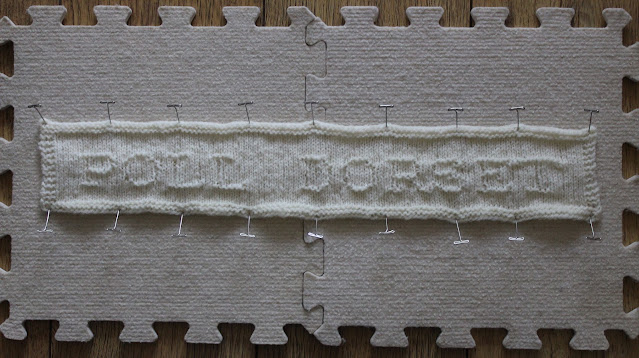The Poll Dorset and the Dorset Horn are another two breeds of sheep that my reference books have clumped together as "one breed", just like they have done with the Badgerface Welsh Mountain breeds of Torddu and Torwen. I can see why they have done this because the Poll Dorset (hornless) has been bred from the Dorset Horn in two different ways and technically they are a different version of the same breed. Its complicated. The Rare Breeds Survival Trust sees them as two separate breeds. I will once again try to my best to separate out the information and blog about them separately.
 |
| Poll Dorset - neither sex have horns |
The Poll Dorset sheep has been developed in two independent locations and by two different ways. Firstly, the Australians started to breed the horns out of Dorset Horns in the 1940's by using similar but hornless breeds, Ryeland and Corriedale, and then following a strict back-mating programme achieved close to 100% Dorset Horn blood. It is known as the Australia Poll Dorset. The other version, known as the Polled Dorset was achieved by accident in the 1950's at North Carolina State University Small Ruminant Unit when a genetic mutation led to the birth of four polled ewes from parents that both carried the usual horns. After a few years of breeding one of those ewes gave birth to twin rams, one was normally horned and the other was naturally polled. The off-spring of the polled ram were purchased by other breeders and within 20 years 70% of all registered Dorset Horns in the US were polled.
The Poll Dorset that is found in the UK have been imported here from the Australian and New Zealand lines, although that is not to say that there may be some that have been imported from the US bloodlines. Due to the fact that is technically a hornless version of the Dorset Horn it means that it is highly prolific and can breed all year round because it does not have a seasonal estrus cycle, but a recurring estrus cycle. They regularly produce twins and triplets are not uncommon either. It can be bred earlier in the year than other breeds to produce lambs in time for the Christmas meat market or it can be bred more intensively to produce lambs three times over a two year period. Either way gives financial advantages to the farmer. At the time of writing the Poll Dorset is the Rare Breeds Survival Trust category 6: Other UK Native Breeds (over 3000) registered breeding ewes.
They are a medium sized sheep with a white face and characteristic pink nostrils. They produce a medium size fleece that is very thick and weighs 2-4kg with a staple length of 2.5-6inch (6.5-12.5cm). The fleece is very white with an organised, regular and fine crimp pattern in both fibre and lock and it feels firm with good body. Micron counts are 26 to 33 so finer fleece can be used for next-to-skin items with coarser fleeces more suited to household textiles. Due to the inclusion of a tiny little bit of down-like genetics from the Australian breeding the fleece found in the UK is likely to be a bit denser and have more bounciness than that of the US fleece.
The fleece can be combed or carded, depending on the length of the fibres but can also be spun from the lock if you prefer. The longer length fleece with more open crimp pattern are easier to spin than those that are shorter with more Down-like qualities, which may require more experience to control. You can spin either woollen style or worsted style, it really is quite a versatile fleece. It will take dye very clearly.
I have found reference to the fact that there are some coloured Dorsets that have black fleece but it doesn't state whether these are polled or horned and are most likely from being cross bred at some point and so are probably not true Dorsets.
I have bought this breed in as 100g of washed fleece and it provided me with 72g of hand combed top.
My finished yarn is really nice and has good bounce. It is 67g/171m of sport weight and is a nice pale cream/warm white. My knitted piece for the project took 19g/49m so I have some left to do whatever with.







No comments:
Post a Comment